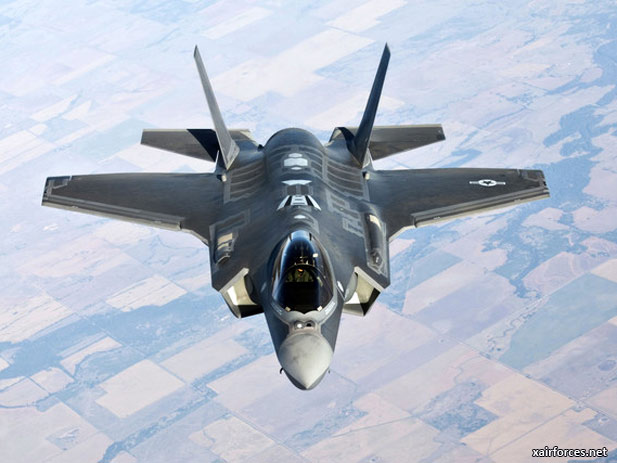
Japan Retains Confidence in F-35 Fighter, Defense Chief Says

Japan is confident Lockheed Martin Corp. (LMT)’s F-35 Joint Strike Fighter will overcome its development setbacks and expects to accept an initial order of four planes on schedule in 2016, Defense Minister Itsunori Onodera said.
“Problems tend to occur when a plane is in development,” Onodera said today in an interview at his office in Tokyo. “We have heard nothing from the U.S. to say there will be a delay. We think the end result will be a good product.”
The Pentagon on Feb. 22 suspended all flights of the $396 billion F-35 program after an inspection revealed a crack on a turbine blade. Japan ordered 42 of the planes as it upgrades its air defense and will increase its military budget for the first time in 11 years in response to North Korea’s nuclear development and China’s assertiveness over disputed islands.
Asked if Japan could abandon its deal with Lockheed Martin, Onodera said “at this point we aren’t thinking of doing that.”
Japan picked the F-35 to replace its aging F-4 aircraft, and could increase its order as its F-2 and F-15 models are retired. The Air Force has a total of 361 fighter planes, according to a white paper published in July last year.
The remainder of the planned 42 planes are meant to be partially manufactured in Japan, starting with two to be bought under the budget for the year starting in April. Mitsubishi Heavy Industries Ltd. (7011) will be involved in work on aircraft bodies, IHI Corp. (7013) on engines, and Mitsubishi Electric Corp. (6503) on mission-related avionics, according to the Defense Ministry.
Weapons Ban
Israel’s participation in the F-35 may affect plans for Japanese production. Japan bans the exports of weapons to countries involved in international conflicts, and the government is considering easing the restriction. Onodera, 52, called for action soon to resolve the uncertainty.
“The government should negotiate this before debate on next year’s budget gets into full swing,” he said, adding that based on parliamentary schedules this would probably be early to mid-March. “I think it should be resolved by then.”
Prime Minister Shinzo Abe is boosting the country’s defense capabilities as tensions rise with China over islands called Senkaku in Japanese and Diaoyu in Chinese. Ships and planes from both countries have been tailing one another and Japan accused China of using weapons-targeting radar last month on a Japanese destroyer and helicopter in nearby waters.
Japan plans to increase its defense budget by 0.8 percent to 4.68 trillion yen ($51 billion) next fiscal year, the first rise in 11 years. China’s defense spending, estimated at about 670 billion yuan ($108 billion) in 2012, has more than doubled since 2006.
A former university professor and deputy foreign minister, Onodera reiterated his call for China to return to talks on setting up a means of marine communication to prevent accidents that could lead to conflict.
“I don’t think anyone is seeking a conflict, but of course there is a possibility of various accidents,” Onodera said. “Japan has asked China to return to the talks and we are waiting for their response.”
Source: Bloomberg News - 27 February 2013
Photo: The U.S. Air Force Lockheed Martin Corp.'s F-35 Joint Strike Fighter Aircraft (Photo by Lockheed Martin)
(27.02.2013)
|